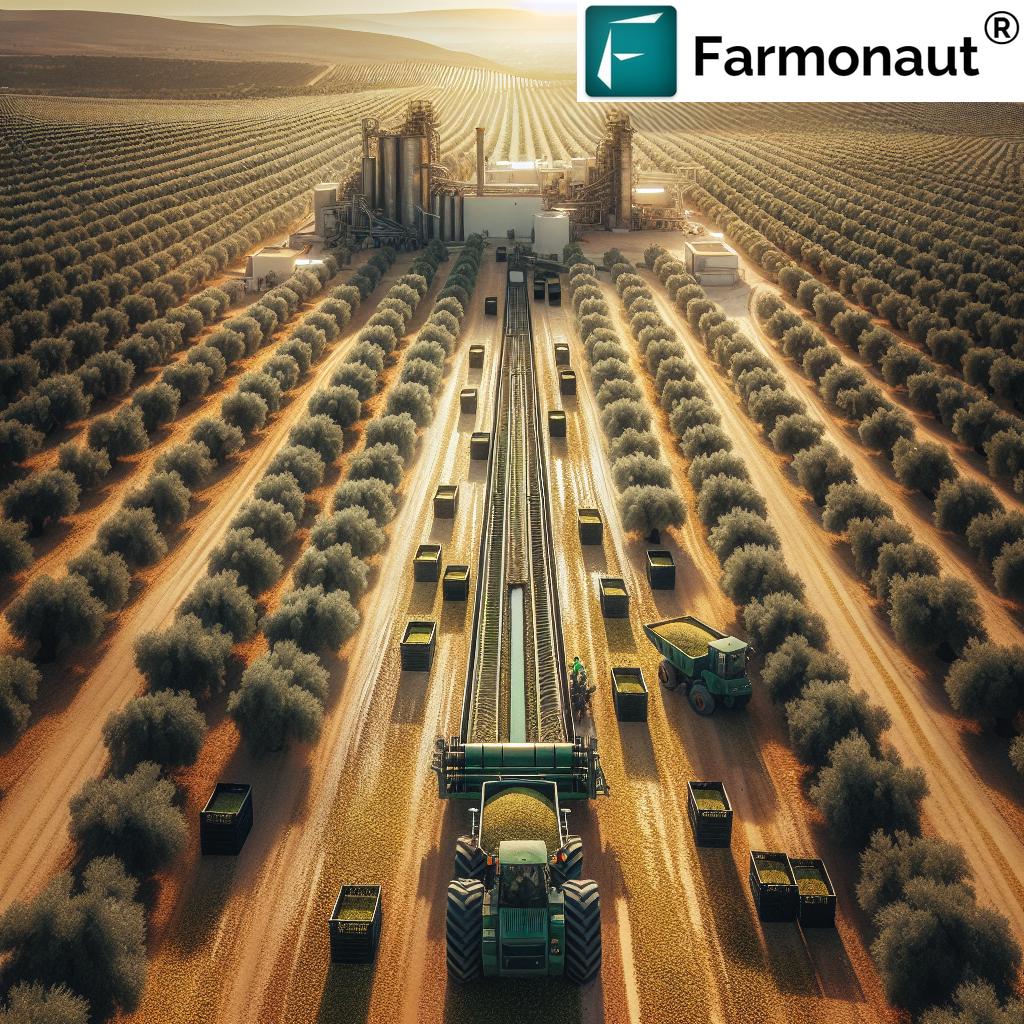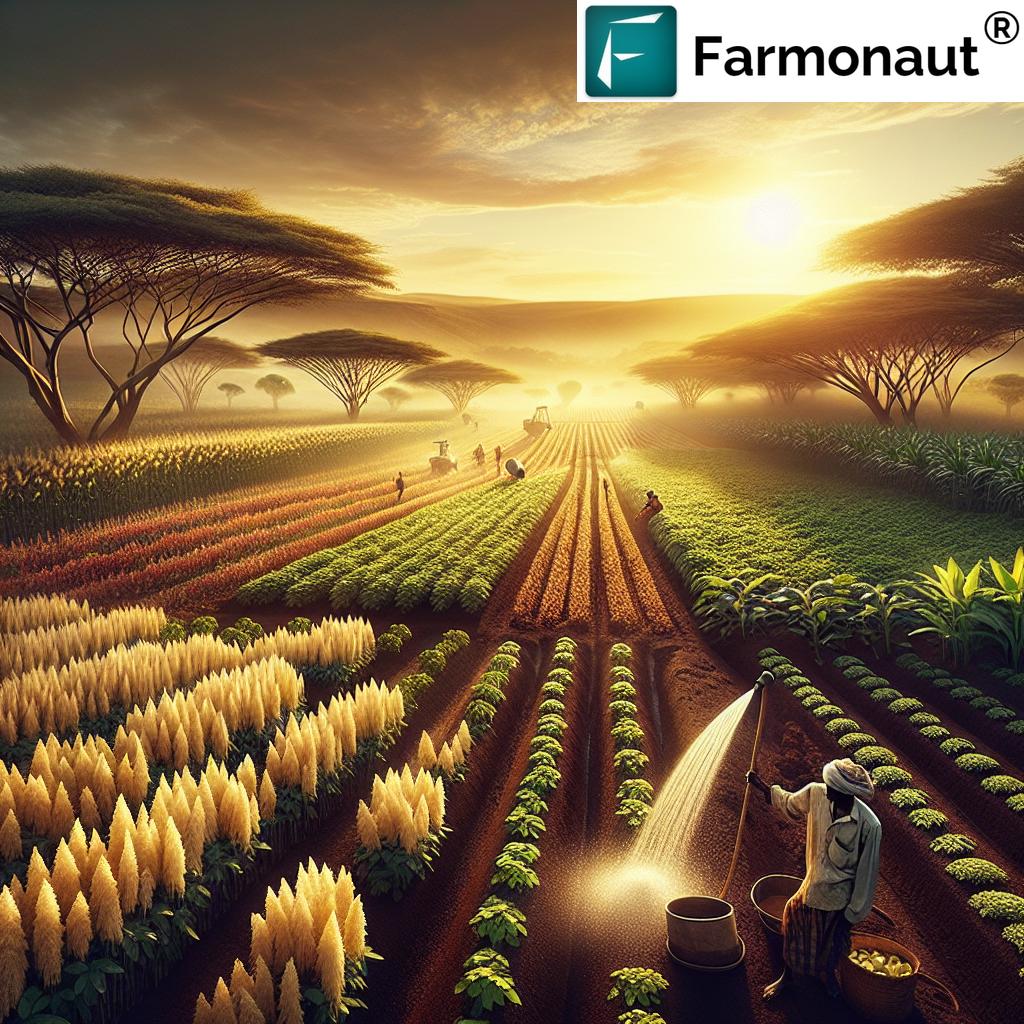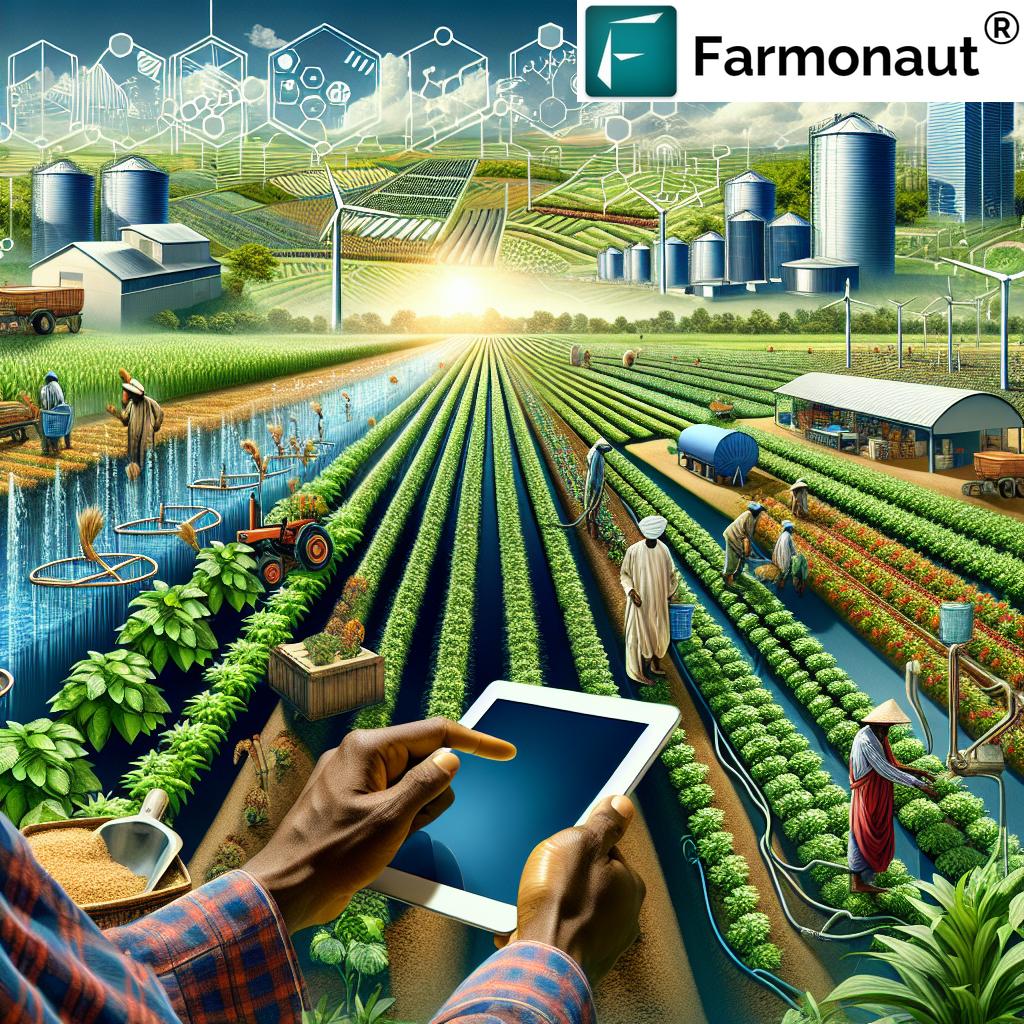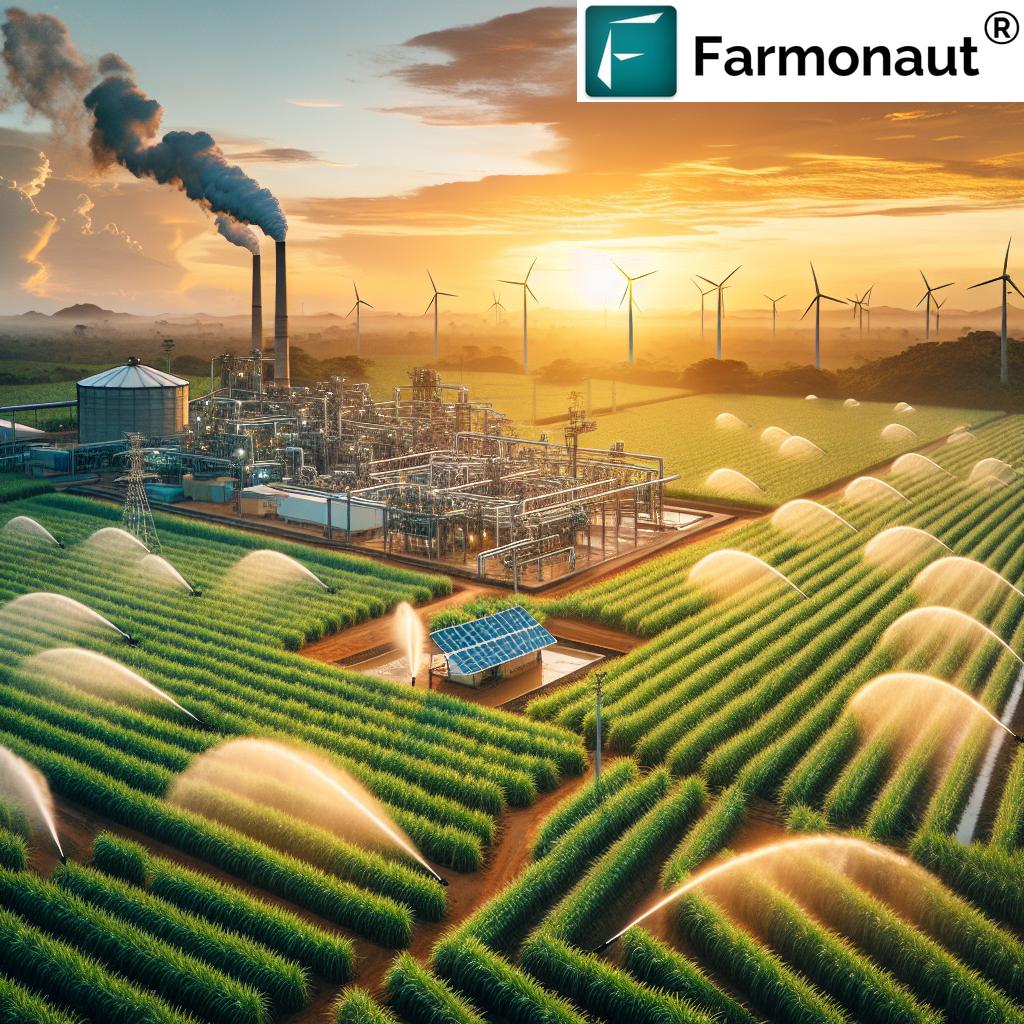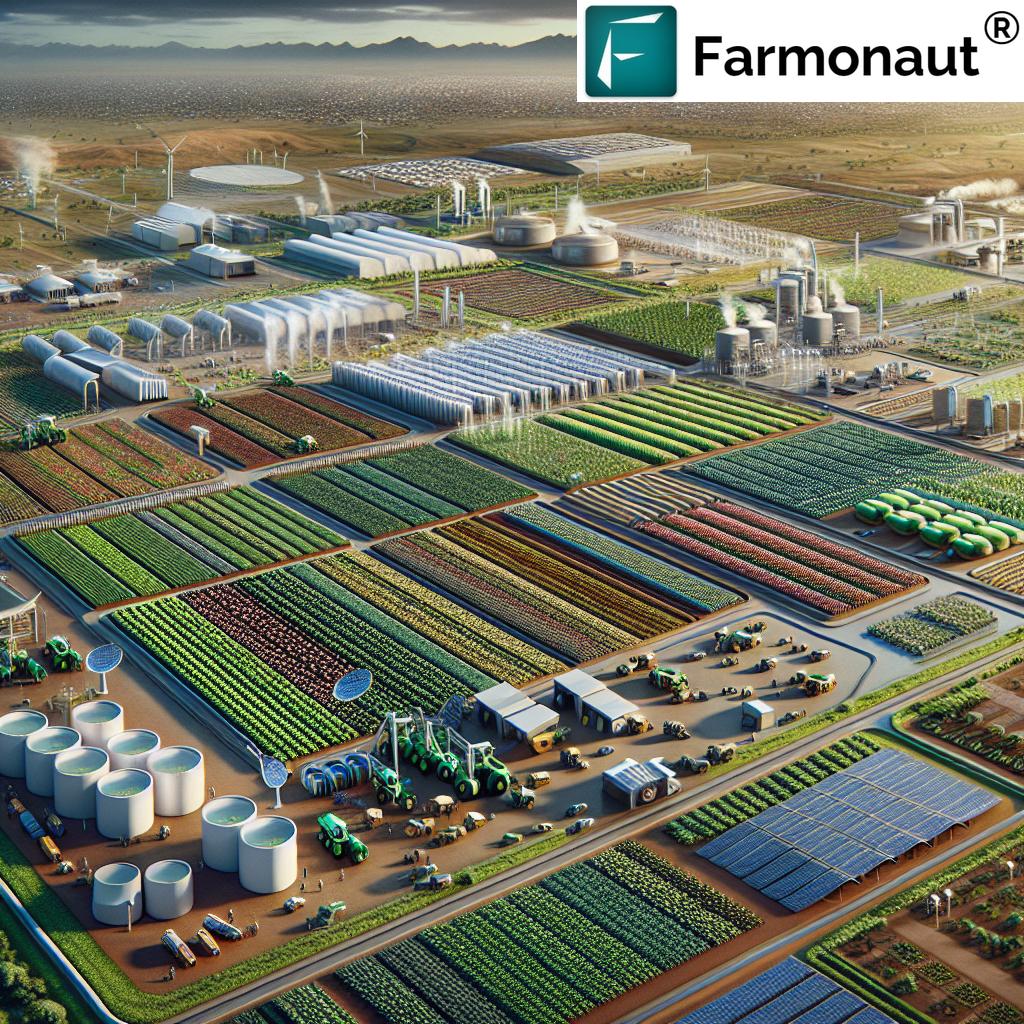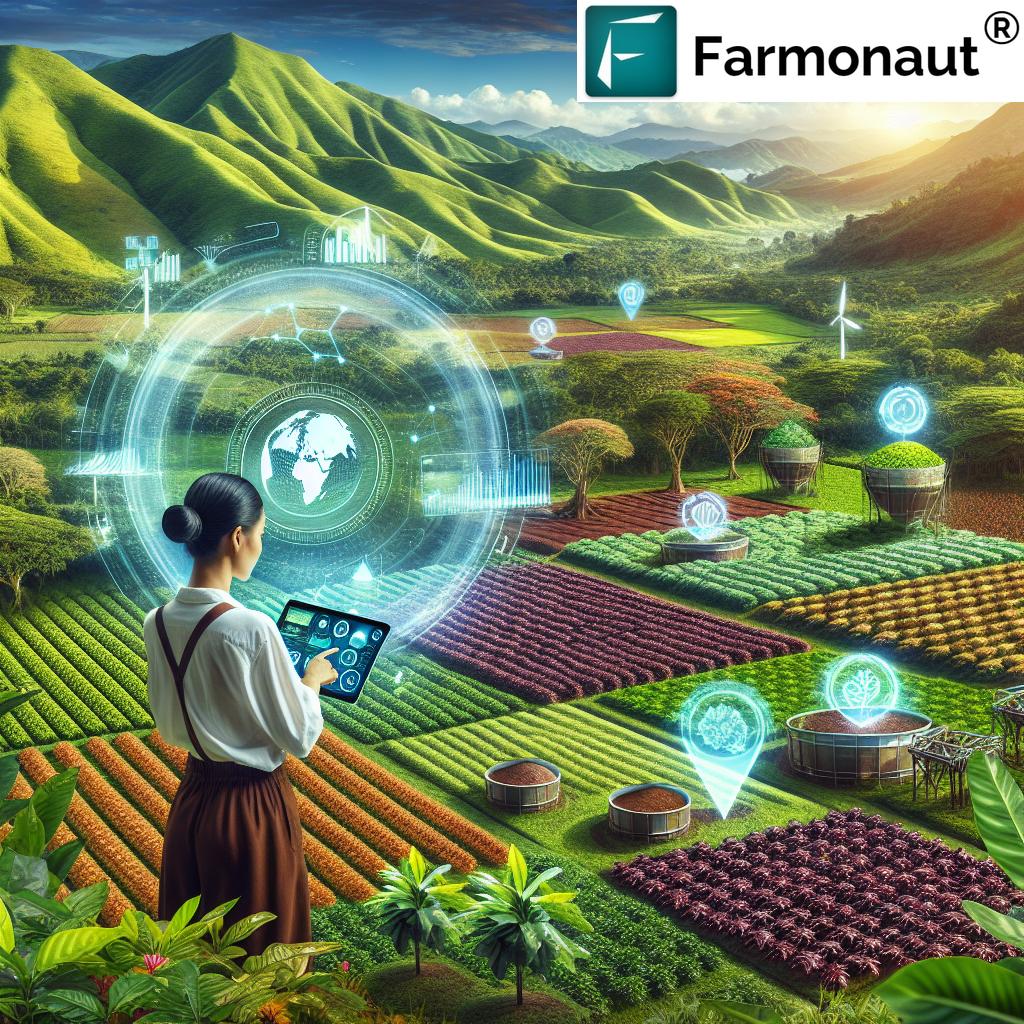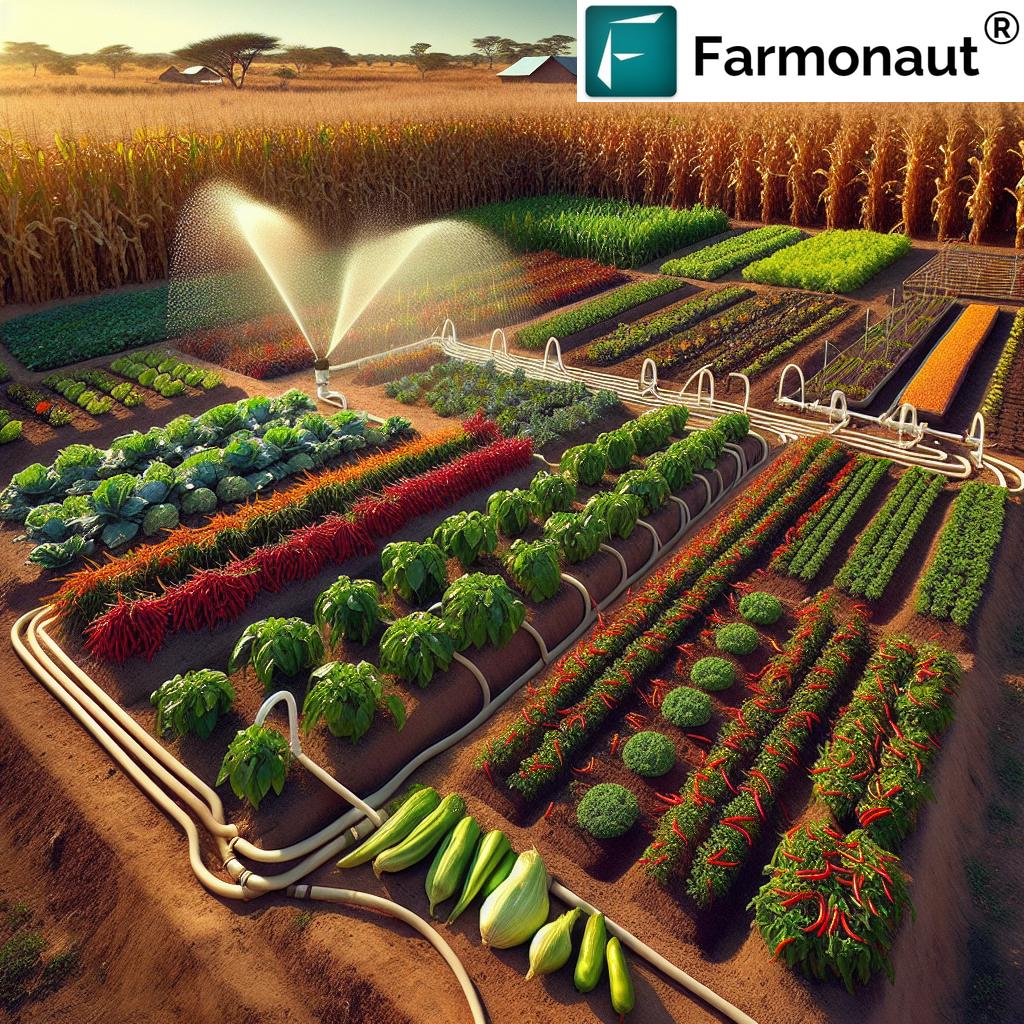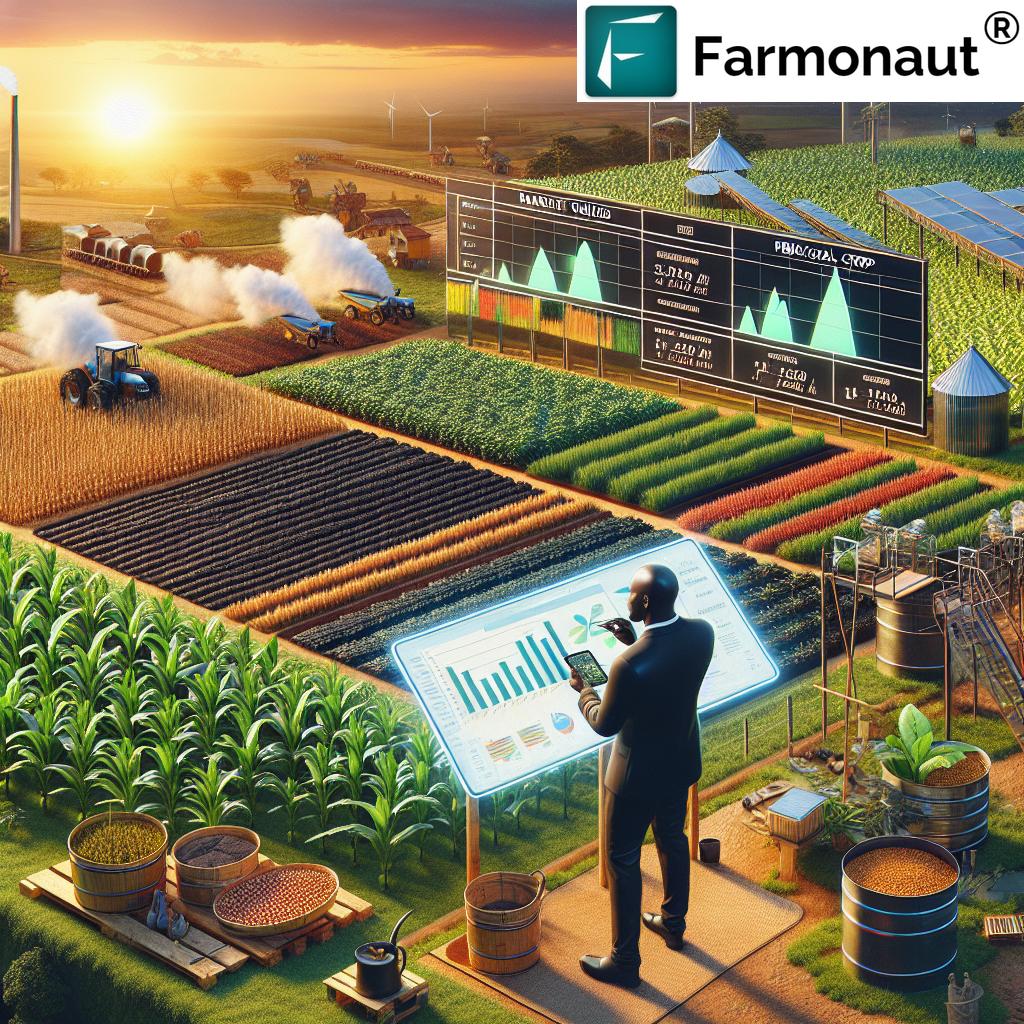Farming in RSA & SA: 2025 Tech Boosts Sustainability
“Over 70% of South African farmers will use satellite data for crop monitoring by 2025.”
Farming in South Africa: Challenges and Opportunities in 2025
Farming in RSA (Republic of South Africa) and SA (Southern Africa) stands at a transformative crossroads. Agriculture remains a vital sector, underpinning food security, employment, and rural development. By 2025, farming in SA is continuously shaped by evolving climate conditions, land reform efforts, adoption of breakthrough technology like satellite data, and the challenges of global market dynamics.
Understanding these critical factors is essential to appreciate the current state and prospects for agriculture in South Africa and the region.
- The semi-arid climatic conditions are intensified by frequent droughts and shifting weather patterns.
- Farmers are increasingly adopting advanced techniques and modern technologies including precision agriculture, satellite data analytics, and smart irrigation.
- Land reform policies and the need for increased market access raise opportunities—while also creating new adaptation challenges.
- With sustainability and environmental stewardship becoming ever more urgent, tech-driven solutions are redefining the future of RSA farming and its communities.
Let us delve into the key 2025 trends, technologies, policy dynamics, and sustainability solutions shaping farming in RSA and SA—and discover opportunities for farmers and stakeholders to thrive.
Climatic Challenges and Adaptation in RSA & SA Farming (2025)
Farming in RSA and much of SA is defined by semi-arid and arid conditions. Recurrent droughts and increasingly unpredictable weather patterns—all exacerbated by global climate change—pose significant challenges for farmers. In 2025, water scarcity remains a pressing issue, affecting both crop yields and livestock health.
- Climate change has led to more frequent and intense droughts.
- Erratic rainfall patterns and heatwaves challenge sustainable farming.
- The country’s agriculture sector is forced to adapt to harsh conditions, making climate adaptation a top priority.
Water Management and Precision Agriculture
To address water scarcity and optimize resource usage:
- Drip irrigation and rainwater harvesting techniques are increasingly adopted for efficient water use.
- Farmers turn to drought-resistant crop varieties to secure yields even in harsh environments.
-
Precision agriculture, empowered by satellite technology and data analytics, enables:
- Real-time crop health monitoring
- Soil moisture tracking
- Targeted irrigation and input application
- State-of-the-art sensors, GIS mapping, and remote monitoring systems allow for granular, data-driven management.
With the support of satellite-driven platforms, such as those provided by Farmonaut, RSA and SA farming communities can interpret complex climatic data and implement technology-backed decision-making for greater adaptability.
Smart Irrigation, Soil Health, and Input Efficiency
Legacy and new irrigation systems now coexist with smart, sensor-driven solutions. These advances help farmers:
- Optimize water schedules based on soil moisture readings
- Practice precision input usage, minimizing overuse of fertilizers/pesticides
- Monitor soil health for sustainable yield improvements
- Reduce water and input costs while maintaining crop and livestock health
By 2025, these innovative farming techniques are central to resilience against unpredictable climate shocks and environmental risks in South Africa’s agriculture sector.
“Land reform policies in RSA are projected to impact 30% of commercial farms with tech-driven solutions by 2025.”
Technological Advancements Elevate RSA Farming
Technological advancements are redefining farming in RSA and SA in 2025. Both commercial and small-scale farmers are gaining greater access to modern technologies that were once considered out of reach.
-
Mechanization
- Modern tractors, harvesters, and equipment reduce labour costs and increase operational efficiency.
- Automation and smart machinery take over repetitive farm tasks.
-
GIS Mapping & Satellite Data
- GIS mapping is revolutionizing farm management—farmers benefit from accurate, up-to-date land and soil maps for planning.
- Satellite data—especially via advanced solutions offered through the Farmonaut Platform—enables real-time field monitoring, vegetation analysis (NDVI), soil health checks, and more.
-
Smart Sensors & Automated Monitoring
- Soil, crop, and livestock sensors collect real-time data for precision agriculture.
- Automated systems trigger alerts for health issues, irrigation needs, and input shortages.
-
Digital Platforms, Information Sharing, and AI-Driven Advisory
- Digital platforms in 2025, such as Farmonaut’s mobile/web app, facilitate information sharing, market access, and transparent resource management.
- AI-powered advisories, such as the Jeevn AI system, deliver actionable insights on weather, input use, and risk mitigation for every scale of RSA farming.
-
Blockchain Traceability & Supply Chain Transparency
- Technology such as blockchain-based traceability ensures reliable record-keeping and transparency from farm to market, critical for export markets and trust.
- This helps fulfil compliance demands in international trade—vital for SA’s export potential.
Bridging the Digital Divide
Despite impressive progress, a gap persists in technology adoption between wealthy commercial farms and subsistence/smallholder communities. Limited capital, digital skills, and infrastructure remain barriers. Government and private sector efforts are crucial to expanding technology access for all, including through affordable, scalable satellite services.
Land Reform and Policy Dynamics in African Agriculture
Land reform continues as a critical, sensitive policy issue in southern African agriculture. In 2025, the government’s efforts to redistribute land and provide greater access to historically disadvantaged populations are beginning to shape a more equitable farming sector.
- Land policies aim to empower emerging black farmers through pilot projects offering training, finance, and mentorship.
- 30% of commercial farms are projected to be directly impacted by tech-driven solutions as part of reform implementation in 2025.
- Uncertainty around property rights, support systems, and long-term access remains an issue, affecting investor confidence.
Capacity Building and Support Mechanisms
Effective reform is supported by:
- Targeted finance and grants for infrastructure, machinery, technological tools, and starter resources.
- Mentorship and skills transfer to build digital and agronomic competence.
- Satellite-based verification and advisory platforms (like those offered by us at Farmonaut) increasing trust and enabling better market access for new entrants.
- Crop loans and insurance products—for example, satellite-based crop loan and insurance verification—are reducing fraud and improving access to much-needed finance for both first-time and established SA farmers.
RSA farming in 2025, therefore, is increasingly collaborative, leveraging policy reforms and technological advancements to build inclusive, resilient farming communities.
Market Access, Export Potential, and Trade in 2025
A defining strength of farming in SA is the country’s diverse production base. Maize, wheat, wine grapes, fruit, and livestock—each remains central to food security and export markets, both within Africa and globally.
- Export potential is expanding through increased value addition (e.g., processing, packaging) for higher margins.
- The African Continental Free Trade Area (AfCFTA) opens new continental markets to RSA farming products.
- Digital systems (including blockchain-based traceability) help RSA exporters maintain compliance, transparency, and consumer trust in international trade.
- Farmers must operate amidst continued challenges: currency fluctuations, volatile input costs, and unreliable logistics.
Overcoming Barriers to Market Entry
By deploying tech-based traceability—like Farmonaut’s traceability platform—and digitized record-keeping, farmers in RSA and SA meet increasing demands from global buyers for transparency, safety and sustainability.
Digital platforms and marketplace technologies empower farmers to better understand price trends, connect with buyers directly, and thus improve competitiveness.
Sustainability and Environmental Stewardship
In 2025, sustainability is not optional; it is a central tenet of farming in south africa and the wider region. Mounting pressure from land degradation, biodiversity loss, and carbon emissions has driven broad adoption of environmentally sound practices.
-
Conservation Agriculture
- Practices such as crop rotation, minimal soil disturbance, and cover cropping restore and preserve soil health.
- These principles strengthen farm resilience to climate shocks, reduce input dependency, and support biodiversity.
-
Renewable Energy and Low-Carbon Solutions
- Solar-powered irrigation systems and on-farm energy solutions lower operational costs and carbon footprints.
- Carbon footprint tracking platforms like Farmonaut’s advanced monitoring tools allow users to measure, manage, and reduce farm-related emissions.
-
Data-Driven Resource Management
- Satellite-driven environmental monitoring and AI-based analytics facilitate smarter input management, waste reduction, and conservation interventions.
- Farmers embrace digitized fleet and resource management—with solutions like Farmonaut’s fleet management platform—to cut emissions, boost operational efficiency, and achieve greater sustainability.
-
Sustainable farming in RSA and SA—by 2025—is synonymous with integrating data-driven techniques, renewable energy, smarter input management, and digital monitoring across all scales of agriculture.
Impact Comparison Table: Traditional vs. Tech-Driven Farming
The following table illustrates a comprehensive, side-by-side comparison of traditional practices and technology-driven, sustainable solutions for RSA and SA farming in 2025. It highlights metrics like yield increase, water use reduction, and carbon footprint reduction—each critical for future-ready, sustainable agriculture.
| Farming Method | Estimated Yield Increase (%) | Water Use Reduction (%) | Carbon Footprint Reduction (%) | Adoption Rate in 2025 (%) | Relevant Technology |
|---|---|---|---|---|---|
| Traditional Row Crop Farming (RSA) | 0–5% | 0–10% | 0–7% | 45% | Basic mechanization |
| Conservation Agriculture | 8–20% | 15–30% | 10–22% | 38% | Soil conservation, crop rotation |
| Drip & Smart Irrigation Systems | 10–25% | 30–50% | 20–38% | 56% | IoT sensors, automation |
| Satellite-Driven Precision Farming | 18–35% | 40–57% | 35–60% | 72% (Commercial), 33% (Emerging) | Satellite monitoring, data analytics |
| AI-Based Crop Advisory Systems | 16–31% | 33–48% | 30–54% | 24% | AI, machine learning |
| Blockchain Traceability Platforms | Indirect | Indirect | 55–80% (Supply chain losses) | 21% | Blockchain, digital records |
| Digital Fleet & Resource Management | 8–20% | 10–17% | 12–36% | 33% | GPS, digital tracking |
These figures reflect trends and averages projected for 2025. They highlight why technology adoption in sustainable farming is a defining priority for the region’s future.
How Farmonaut Empowers Sustainable RSA & SA Farming
Satellite data in agriculture is a game changer, and as a pioneering satellite technology company, Farmonaut is at the forefront of empowering farmers and agricultural businesses in RSA & SA to make affordable, informed, and data-driven decisions for sustainability and profitability.
- Our mission is to make satellite-driven insights accessible to african farmers, governments, and businesses—enabling precision, productivity, and traceability across the value chain.
-
Our platform provides:
- Real-time monitoring of crop health, soil, vegetation, mining, and infrastructure projects.
- AI-based advisory systems for forecasting weather, detecting risks, and optimizing input usage.
- Blockchain-powered traceability for agricultural products to build market trust and compliance.
- Resource management tools—including fleet and logistics optimization—to cut costs and environmental impact.
- Environmental impact monitoring, such as carbon footprint tracking, to promote sustainable practices in farming and mining.
Our technology offers scalability for everyone—from smallholder farmers in rural communities to large commercial operations and government authorities, ensuring that the benefits of satellite and AI innovations reach all levels of the agricultural sector.
Use Cases in RSA & SA (2025)
- Farm management platforms support both crop and livestock producers in optimizing productivity and sustainability.
- API access allows developers and agribusinesses to integrate satellite data into their own software—check out the Farmonaut API and API Developer Docs for details.
- Environmental, social, and governance (ESG) monitoring—such as digital carbon footprinting—is helping African agribusinesses report and improve their sustainability metrics (Explore Farmonaut carbon footprinting tools).
- Traceability systems meet growing market demands for verified, safely sourced produce (More on Farmonaut’s traceability solution).
- Our fleet management platform offers cost savings through smarter vehicle deployment, route optimization, and resource efficiency (Fleet management for SA farming).
We make tech adoption in sustainable farming affordable and practical for all, supporting the journey of RSA & SA farming into a more resilient, productive, and sustainable future.
Future Outlook for Farming in RSA & SA
What does the future hold for farming in RSA and SA beyond 2025?
- Continued technology adoption—AI, satellite data, automation, and digital advisory solutions—will boost resilience and yields.
- Tech-driven land reform and policy adaptation can foster inter-generational and cross-community equity.
- Sustainability and climate resilience are set to move from fringe to mainstream—with environmental stewardship central to operational strategy.
- Farmers embracing traceability and sustainability reporting gain better access to top-tier, global markets.
- Government and private sector collaboration remains key to accessible finance, capacity building, and digital adoption—particularly for rural, emerging farmers.
- Knowledge-sharing platforms (online, mobile, and in-field) enable faster, peer-to-peer learning, accelerating best practice dissemination across African agriculture.
The future of farming in SA is therefore a story of technology, adaptation, and sustainable progress—it is about feeding nations, creating jobs, and inspiring rural development, all while protecting the environment for generations to come.
Farmonaut Platform Access & Key Solutions for RSA and SA
Ready to transform your approach to farming in RSA, SA, and across Africa? Discover the Farmonaut platform—your gateway to real-time satellite monitoring, AI-advisory, and digital resource management for agriculture and allied industries.
-
Farmonaut API:
https://sat.farmonaut.com/api
|
API Developer Docs
For developers, agribusinesses, and advanced users: Integrate satellite monitoring and analytics into your existing systems with ease. -
Large-scale Farm Management Dashboard:
https://farmonaut.com/agro-admin-app/
For enterprise field managers—oversee satellite monitoring, manage inputs and outputs, and streamline supply chain operations. -
Crop Plantation, Forest, and Advisory Platform:
https://farmonaut.com/app_redirect
For smallholder and forest-based growers: Access satellite-based crop monitoring, advisory, and environmental insights via mobile/web app. -
Traceability, Fleet, Insurance, and Carbon Solutions:
Traceability: Product Traceability in RSA and Global Markets
Fleet: Fleet Management for RSA and Africa
Insurance: Satellite-Based Crop Loan and Insurance
Carbon Footprinting: Carbon Footprinting and ESG Monitoring
Frequently Asked Questions (FAQ)
What are the biggest challenges facing farming in RSA in 2025?
Key challenges include climate change (droughts, erratic weather), water scarcity, rising input costs, the technology adoption gap, ongoing land reform policy uncertainties, and market volatility. However, increased use of satellite data, smart irrigation, and digital tools are helping farmers overcome these barriers.
How is technology affecting the adoption of sustainable farming in SA?
Technology—including precision agriculture, satellite analytics, AI-driven advisory, and blockchain-powered traceability—is enabling more efficient use of water and inputs, real-time monitoring of crop and soil health, transparent supply chains, and improvement in both yields and sustainability metrics. Adoption rates are highest among commercial farmers, but are growing among emerging and smallholder communities.
Why is satellite data important for African farmers?
Satellite data provides actionable, up-to-date insights on crop condition, soil moisture, weather risks, and resource use. This empowers RSA and SA farmers to optimize decisions, reduce losses, and increase productivity while supporting compliance and traceability in export markets. By 2025, over 70% of farmers in South Africa will access some form of satellite crop monitoring.
How is land reform impacting farming in South Africa?
Land reform is helping to redistribute commercial agricultural land to previously disadvantaged communities, aiming for a more equitable sector. New policies pair access with training, finance, and digital integration to ensure long-term viability. Satellite-based farm verification and advisory services are supporting both beneficiaries and investors during transition.
What solutions does Farmonaut provide for RSA and SA agriculture?
We offer satellite-based crop and resource monitoring, AI-advisory systems, blockchain traceability, carbon footprinting, digital fleet/resource management, and scalable APIs for developers and corporates. Our platform supports sustainable, low-cost adoption for all farmers, businesses, and government stakeholders in the region.
Where can I access Farmonaut’s solutions?
You can access the Farmonaut platform via web or mobile app, integrate via API, or learn more about product offerings on our website.
Conclusion: Nurturing Food Security, Prosperity, and Resilience
Farming in RSA and across Southern Africa in 2025 is on a dynamic journey shaped by the confluence of climate adaptation, progressive policy, technology-powered transformation, and a growing commitment to sustainability.
- Encouragingly, modern farming systems—especially those leveraging satellite data, AI, and blockchain traceability—are driving increased productivity, environmental stewardship, and market competitiveness.
- The twin forces of government policy and private sector innovation are critical to ensuring inclusive growth and resilience for all farming communities—from rural, smallholders in drought-prone zones to industrial-scale agribusinesses exporting worldwide.
- Accessible, affordable technology adoption—as available via platforms like Farmonaut—will remain the cornerstone of African agriculture’s response to ongoing and future challenges.
- The future of farming in RSA is sustainable, data-driven, and empowering for every farmer.
Ready to Get Started?
Experience the future of farming in RSA and SA.



Pioneering a more sustainable, equitable, and thriving future for South African and African agriculture—today and beyond 2025.


